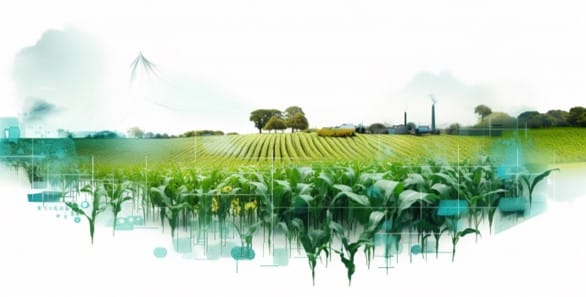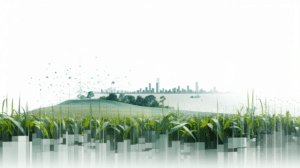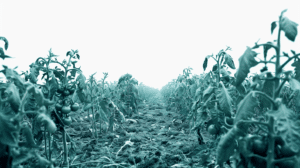How Leveraging Advanced Technology Empowers Food & Beverage Companies
In the dynamic landscape of the food and beverage industry, dealing with the volatility and instability of crop supply has been an enduring challenge. Food and beverage companies have had to deal with these uncertainties, especially as the importance of sustainability has surged on both governmental and consumer fronts. New regulations and requirements, such as the European Union Deforestation Regulation (EUDR), GHG emissions reduction and traceability are underscoring the need for compliance. This journey, driven by regulatory demands, naturally expands, empowered by advanced technology. It lays the foundation for comprehensive agronomic optimization tools, shedding a spotlight on crop supply for food and beverage companies.
From Compliance to Comprehensive Mapping: The Starting Point
Food and beverage companies operate in a complex ecosystem where supply chains intertwine, and raw materials travel from fields to traders, factories and finally to consumers’ tables. The requirement for transparency, legality, and sustainability in this multi-phased process necessitates a detailed mapping of the supply chain—an essential starting point in the journey toward efficient management of crop supply.
However, this initial mapping is not without its challenges. The supply chain is often fragmented, involving multiple stakeholders, geographical regions, and diverse crops. Data accuracy and transparency can be elusive, making the task of mapping a formidable one. Nevertheless, it’s a journey that food and beverage companies embark upon with determination.
Agronomic Optimization and Its Benefits
Once the supply chain is mapped, it becomes the canvas for a broader opportunity—the emergence of agronomic optimization. With the integration of advanced technology, data, and agronomic protocols, what was once driven by regulatory demands now opens the door to a world where agronomy, technology, and data converge.
Agronomic optimization harnesses data and technology to fine-tune every facet of crop cultivation, maximizing yields, enhancing quality, and optimizing resource allocation. The results are tangible and impactful: increased crop yields, improved quality meeting consumer expectations, heightened resource efficiency reducing waste and costs, and the adoption of data-driven decision-making enhancing operational excellence.
Scaling for Impact: Thousands of Growers, Plots, and Beyond
The significance of scalability cannot be overstated. It’s not just a matter of capturing the mapping process; it’s about embracing a transformative leap that holds substantial potential. For enterprise food and beverage companies that prioritize quality, quantity, visibility into schedules, and sustainable cultivation practices, scalability is not a mere option—it’s a necessity.
At scale, the effects ripple across the entire supply chain. Reductions in fertilization use, tracking of crop quality, and monitoring of crop costs all come into play. These measures, when implemented at scale, have a profound impact on business results for food and beverage companies.
The ability to offer advice at scale empowers these companies to not only increase the effectiveness of their agronomy team but also extend their support to a broader community of farmers.
In a world where food and beverage companies have gotten used to handling volatile and unstable crop supply, the journey from compliance to comprehensive agronomic optimization becomes the natural path to follow. Agriculture has been their blind spot, and adding visibility to the journey of their crops is revealing what truly happens at the source of their supply chain








